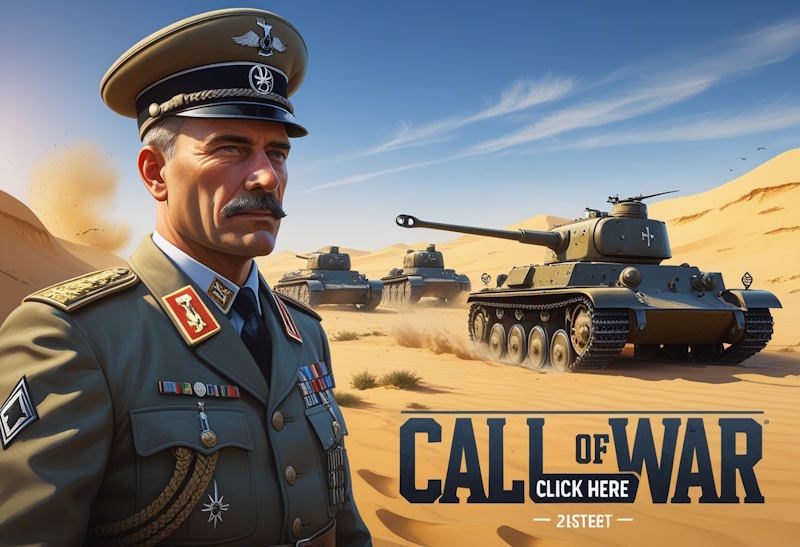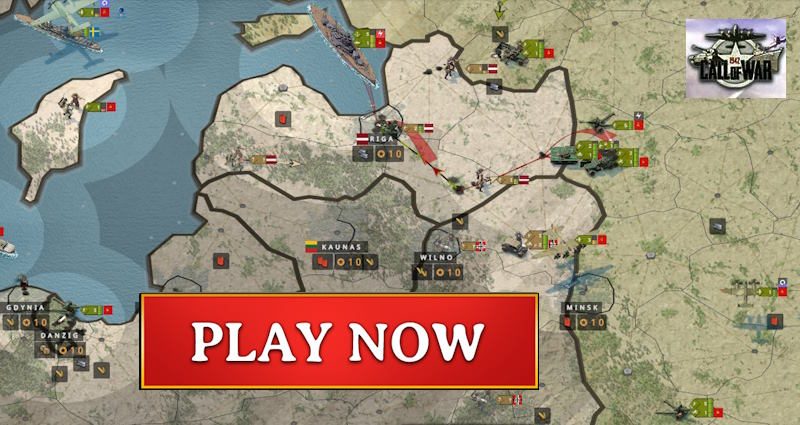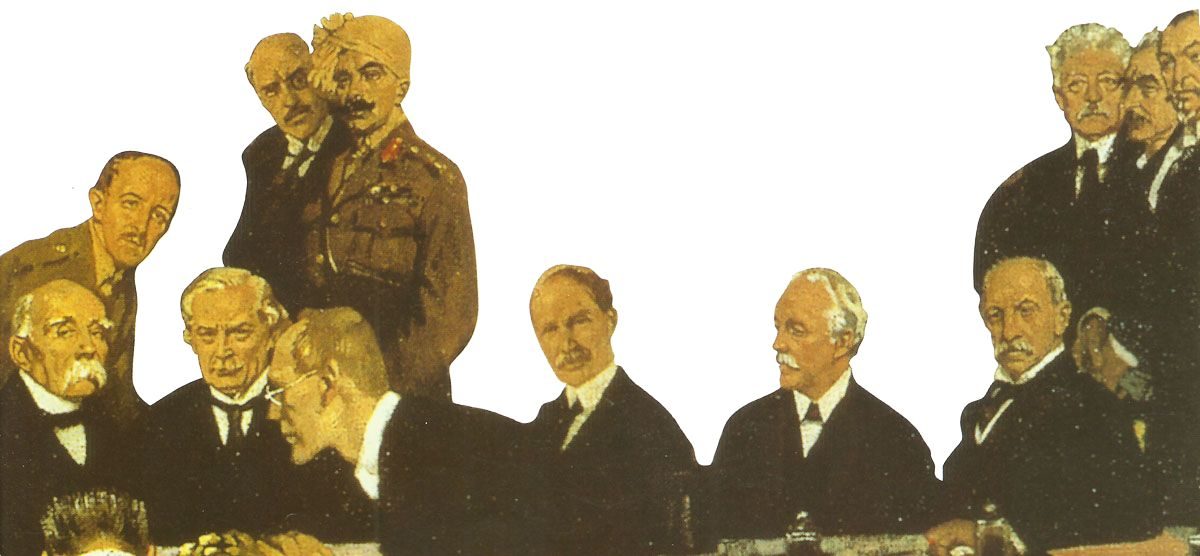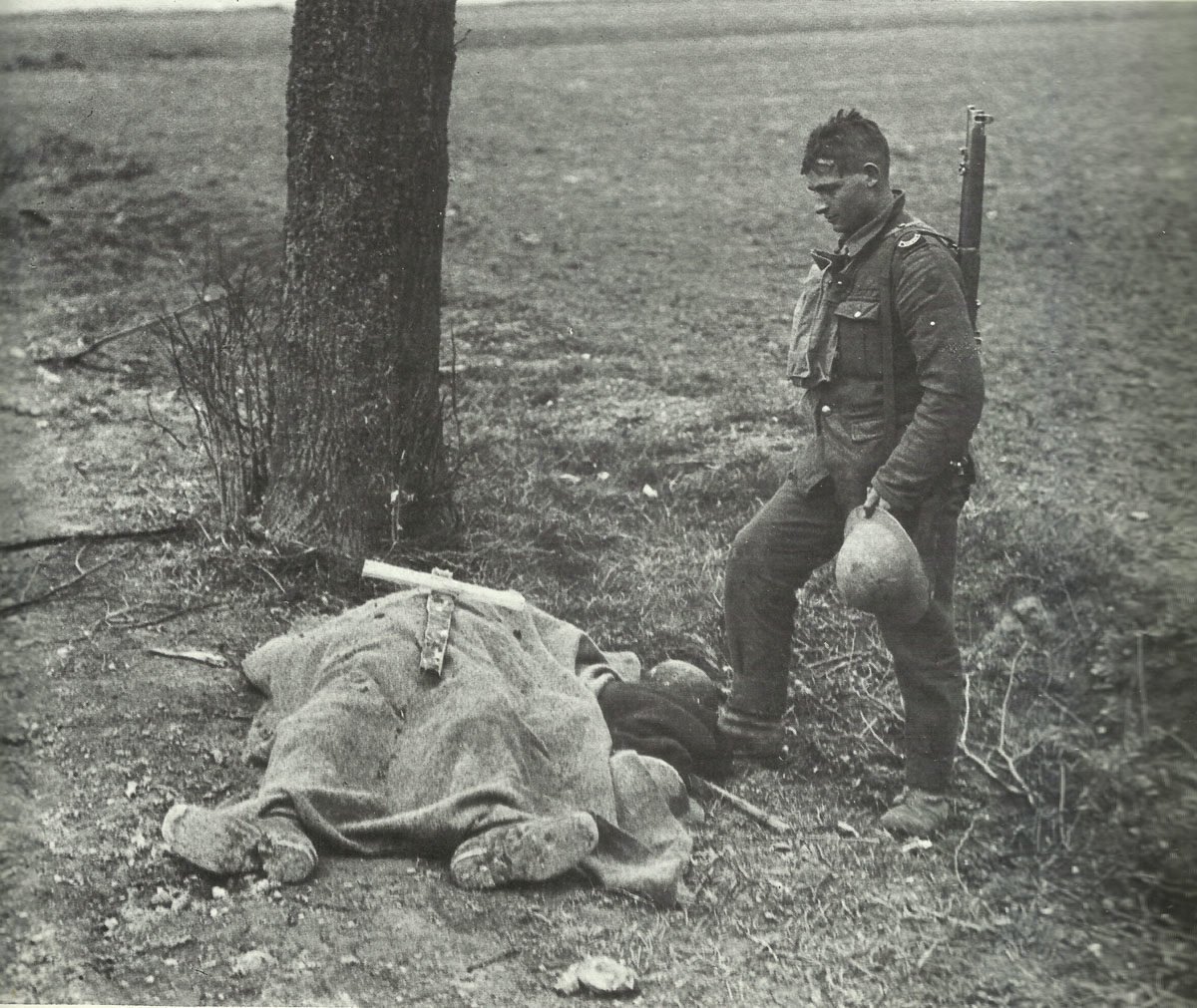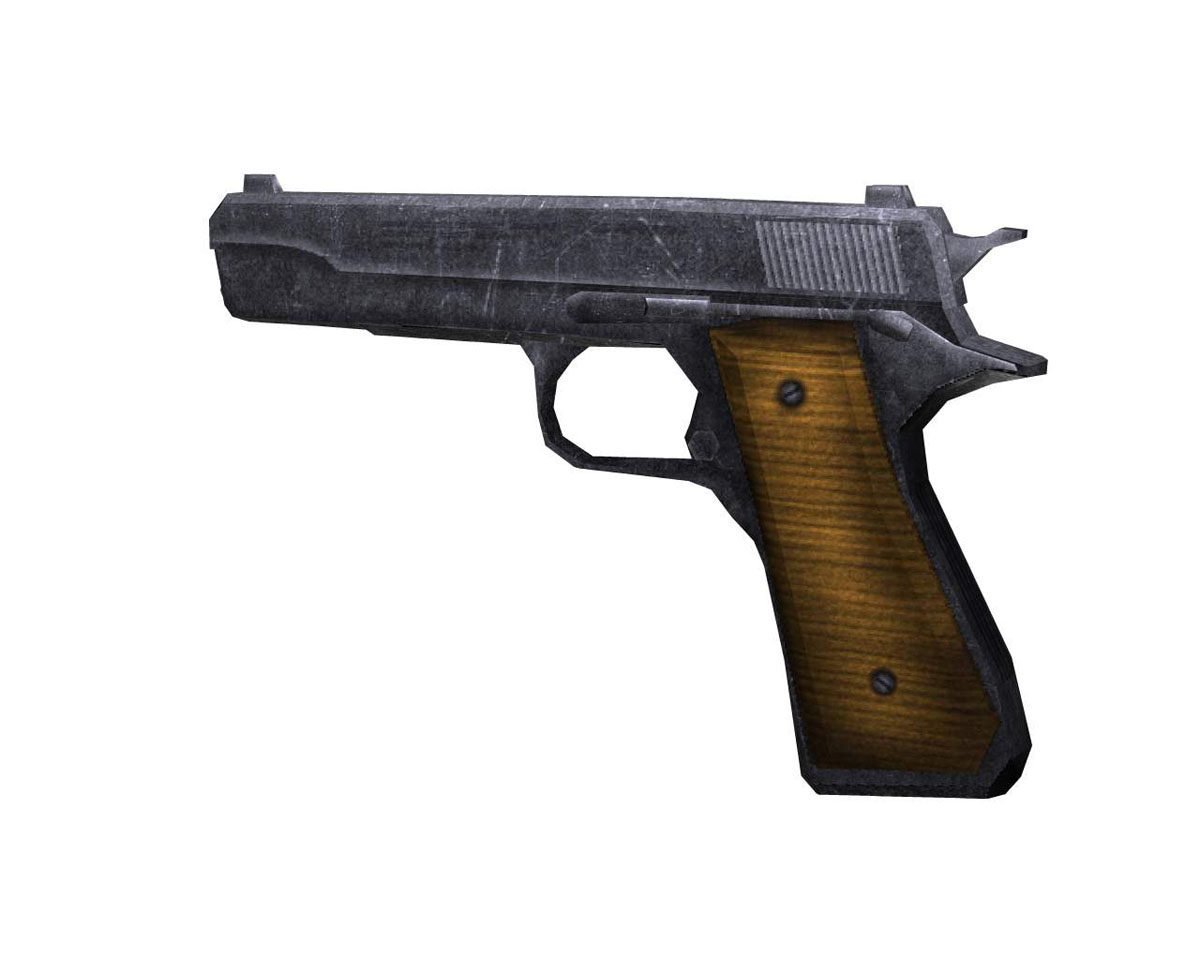When Austria-Hungary declared war on Serbia in July 1914, hardly anyone thought the small Balkan kingdom could withstand the power of a major European empire. Serbia, against the odds, stunned the world by beating back several Austrian invasions through 1914.
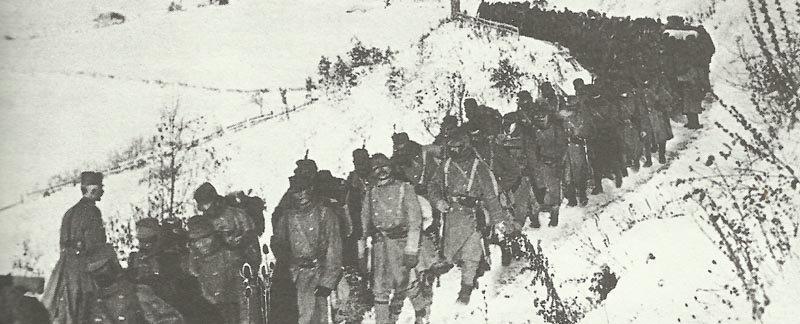
Table of Contents
But that remarkable resistance didn’t last. The Central Powers’ systematic conquest of Serbia in 1915, with over 600,000 German, Austro-Hungarian, and Bulgarian troops, pushed the entire Serbian army into a brutal retreat across the Albanian mountains to the Adriatic coast.
The Serbian campaigns of 1914-15 stand out as some of World War I‘s most dramatic episodes. Serbia’s early victories against Austria-Hungary helped spark the wider conflict, but its eventual collapse opened up vital supply lines to the Ottoman Empire and changed the war’s strategic balance.
Overview of Serbia Before the Invasion
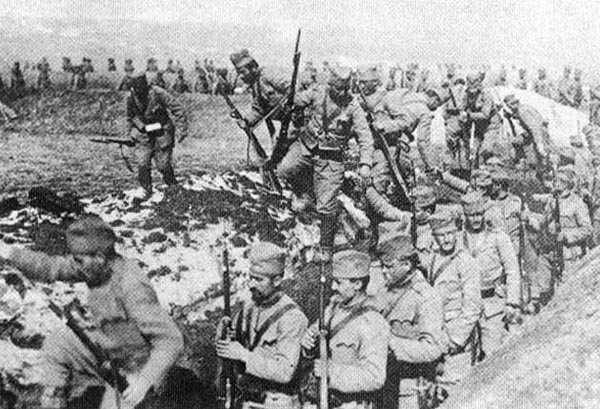
Serbia faced some tough problems before the Central Powers attacked in 1914. The country was still recovering from recent wars and struggled with serious shortages of military equipment.
Political and Military Situation in Serbia
Serbia entered World War I already weakened by two Balkan Wars in 1912-1913. The country gained territory but burned through most of its supplies and resources.
The Serbian economy was in rough shape. That made it almost impossible to buy enough modern weapons for the army.
Serbia also worried about hostile neighbors, especially Bulgaria. The two countries had just fought in the Second Balkan War in 1913, leaving things tense along Serbia’s eastern border.
The country’s military reserves couldn’t match Austria-Hungary’s. Serbia could only replace losses with new recruits as they reached military age—about 60,000 men per year.
Political tensions kept rising after Austria-Hungary annexed Bosnia in 1908. Many Serbs lived in Bosnia and wanted to join Serbia, and Russia backed Serbia’s ambitions in the Balkans.
Role of the Serbian Government and Army
The Serbian government ordered full mobilization on July 25, 1914. By July 30, they had called up about 450,000 men from three age groups.
The Serbian army had experienced commanders like General Radomir Putnik, but equipment shortages were a huge problem.
They only had 180,000 modern rifles for their front-line troops, which left them short by about a quarter to a third. Plenty of soldiers ended up with old gear or even civilian clothes.
The army consisted of three main groups:
- 1st ban: Ages 21-31, best equipped
- 2nd ban: Ages 32-38, partially equipped
- 3rd ban: Ages 39-45, poorly equipped
Serbia ordered 120,000 rifles from Russia in 1914, but those didn’t show up until August, after the fighting had already started.
Central Powers’ Strategy and Alliance
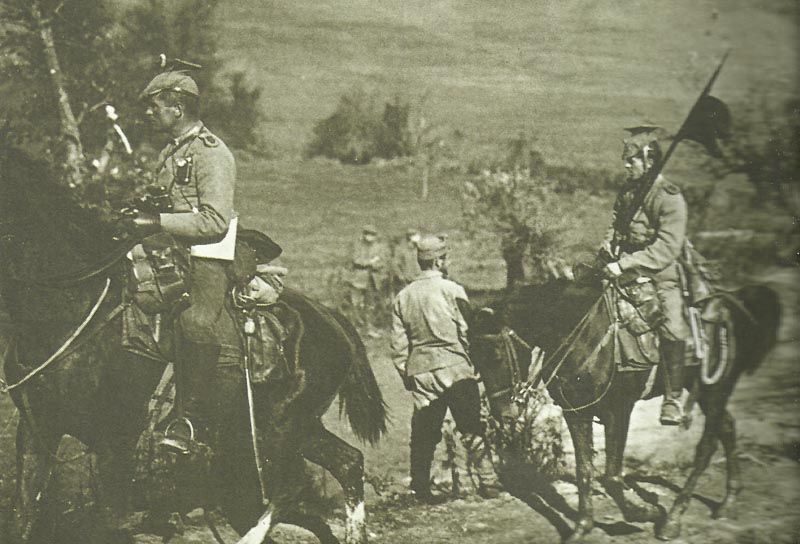
The Central Powers put together a coordinated strategy that mixed German leadership, Austrian resources, and Bulgaria’s territorial ambitions. This alliance started out as just Germany and Austria-Hungary, but soon turned into a three-way coalition that could attack Serbia from several directions.
War Aims and Preparations
Germany wanted a direct rail connection to the Ottoman Empire through Serbia. That way, they could send military supplies to Istanbul and help their Turkish ally.
Austria-Hungary aimed to wipe out Serbia as a regional threat to their multi-ethnic empire. They saw the Kingdom of Serbia as a destabilizing force that encouraged nationalist movements inside their own borders.
The Central Powers put together a force of over 600,000 troops for the 1915 campaign—100,000 Germans, 200,000 Austro-Hungarians, and 300,000 Bulgarians.
German Chief of Staff Erich von Falkenhayn convinced Austrian Chief Conrad von Hötzendorf that Serbia was strategically critical. On September 8, 1915, they signed a convention in Pless calling for immediate action against Serbia.
Germany and Austria-Hungary’s Military Plans
Field Marshal August von Mackensen led the combined German-Austrian forces, known as Army Group Mackensen. This unified command finally solved the coordination issues that plagued earlier campaigns.
The German Eleventh Army under Max von Gallwitz attacked from the north, crossing the Danube River. The Austro-Hungarian Third Army under Hermann Kövess crossed the Sava River and aimed to capture Belgrade.
This two-pronged attack from the north was supposed to crush Serbian defenses fast. The Central Powers had a big advantage in artillery—273 guns, with 108 of them heavy pieces.
German forces brought modern tech and seasoned officers from the Western Front. They even transferred the Alpine Corps from France to handle mountain fighting in Serbia.
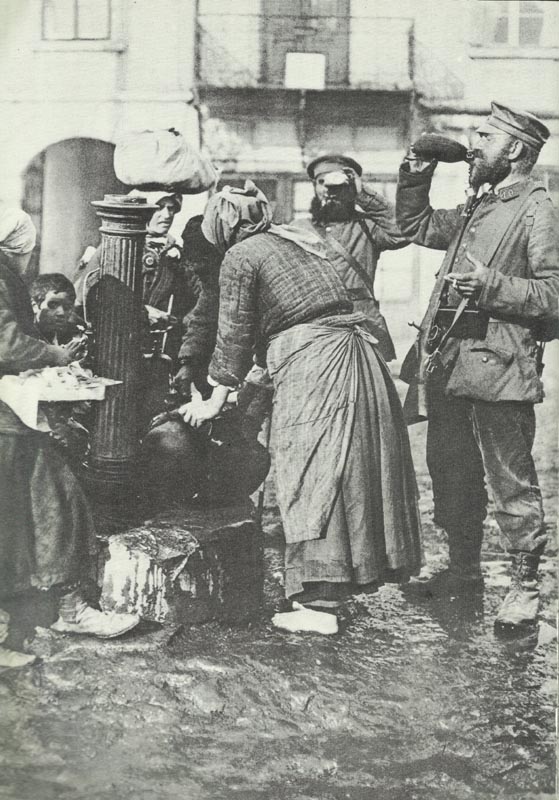
Involvement of Bulgaria and Other Allies
Bulgaria joined the Central Powers in 1915 after a lot of diplomatic wrangling. Both sides tried to win over Bulgaria, but the Central Powers offered better territorial rewards.
Bulgaria got promises of disputed Serbian lands, plus more territory in Macedonia and Thrace. Germany and Austria-Hungary also sent military equipment and economic aid to seal the deal.
Tsar Ferdinand of Bulgaria signed the alliance treaty with Germany on September 23, 1915. With Bulgaria in, the Central Powers opened a new front against Serbia from the east and south.
The Bulgarian First Army under Kliment Boyadzhiev attacked toward Niš, hoping to link up with German troops. The Bulgarian Second Army under Georgi Todorov moved into Macedonia to cut off Serbian supplies from Allied forces at Salonika.
This three-nation alliance gave the Central Powers overwhelming numbers compared to Serbia’s 300,000 defenders. With attacks coming from the north and east, Serbia didn’t have much of a chance.
The 1914–15 Invasion of Serbia
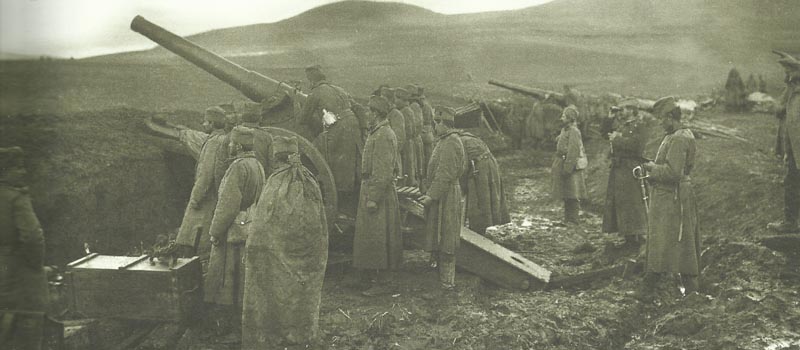
Austria-Hungary started attacking Serbia in July 1914, launching several invasions. Eventually, the Central Powers conquered the kingdom in late 1915 through coordinated strikes by German, Austro-Hungarian, and Bulgarian armies.
The campaign went from Austro-Hungarian failures to a decisive Central Powers victory that knocked Serbia out of the war.
Initial Offensives and Major Battles
Austria-Hungary declared war on Serbia on July 28, 1914, calling it a “punitive expedition.” General Oskar Potiorek led the first invasion attempt in August 1914.
The Serbian army, under Field Marshal Radomir Putnik, stopped the first invasion at the Battle of Cer Mountain (August 15-20, 1914). That was actually the first Allied victory of World War I.
Austria-Hungary regrouped and tried again in September 1914. Serbian troops pushed them back at the Battle of the Drina, forcing another retreat across the river.
The third assault came in November 1914. Despite being outnumbered and under-equipped, Serbian soldiers managed to defeat the invaders again.
These early Serbian wins shocked Europe. It was one of those rare moments when a small nation repeatedly beat a major power.
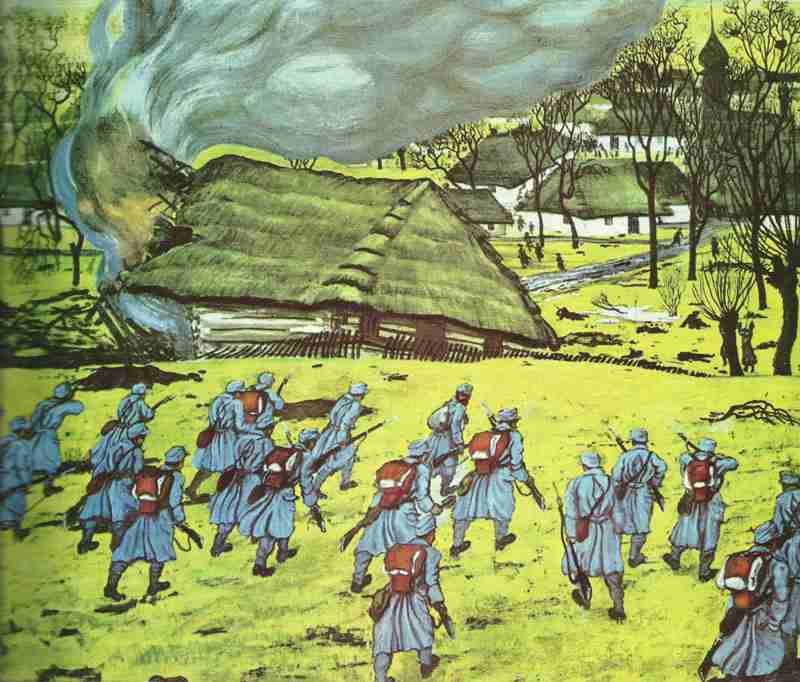
Role of the Balkans Theater
The Balkans became a secondary but still important theater in World War I. Austria-Hungary massed over 500,000 soldiers on Serbia’s borders by August 1914, though they later sent some to fight Russia, dropping their numbers to 285,000.
Serbia’s location controlled key routes through the Balkans. The Central Powers needed this region for a direct supply line from Berlin to Constantinople.
The Serbian front forced Austria-Hungary to split its resources, weakening them on the Russian front.
Austro-Hungarian Force Composition (August 1914):
- 329 battalions vs. 209 Serbian battalions
- 36,000 peacetime officers
- 414,000 enlisted personnel
- Potential mobilization: 3.35 million men
Participation of the Ottoman Empire
The Ottoman Empire didn’t directly join the 1914-15 Serbian campaigns. Still, the conquest of Serbia helped Ottoman interests by opening up new supply routes.
The Central Powers’ win in Serbia created a crucial land corridor. Now Germany could send supplies to the Ottoman Empire for the rest of the war.
Ottoman forces stayed focused on other fronts, like Gallipoli and the Middle East. They relied on German support, which became much steadier after Serbia fell.
This campaign really tightened the alliance between Germany and the Ottomans. It showed the Central Powers could coordinate operations across different regions.
Impact on Civilians and the Serbian Government
The Serbian population suffered horribly during the 1914-15 campaigns. Somewhere between 450,000 and 842,000 Serbian civilians died from war-related causes between 1914 and 1918.
Serbia lost about 25% of all mobilized troops—265,164 soldiers, according to 1924 Yugoslav government estimates. That’s a higher casualty rate than France (16.8%) or Germany (15.4%).
The Serbian government struggled to keep up civilian morale and provide basic services. Food shortages and disease outbreaks made life even harder during the invasions.
Serbian Military Decline:
- Peak strength: 420,000 troops
- Strength at liberation: 100,000 troops
- Total population loss: Over 29% of pre-war population
The government had a tough time replacing military losses, with only about 60,000 new recruits available each year. They ended up recruiting under-age and over-age men just to keep the army going.
Bulgaria’s Entry into the War and Attack
Bulgaria joined the Central Powers in 1915. This move seriously shifted the strategic landscape.
The alliance let the Central Powers attack Serbia from three sides at once. On October 6, 1915, German Field Marshal August von Mackensen launched the fourth invasion of Serbia.
Bulgarian, German, and Austro-Hungarian troops coordinated this massive assault. The Bulgarian push from the east was especially critical.
Serbia just couldn’t defend against so many directions with such limited resources. The attack finally broke through, forcing Serbian forces into the Great Retreat through Montenegro and Albania.
They evacuated to Greece. By November 24, 1915, Mackensen declared the campaign finished.
Serbia was occupied and split between Austria-Hungary and Bulgaria. The Central Powers held it until 1918.
Evacuation of the Serbian Army to the Adriatic
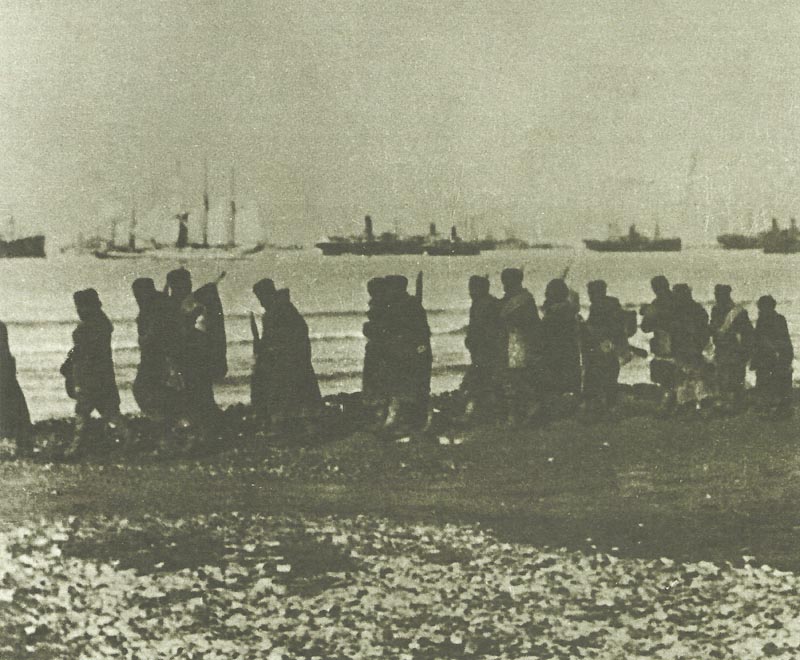
Over 300,000 Serbian soldiers and civilians fled toward the Adriatic Sea during the winter of 1915-16. Allied ships evacuated about 158,000 people from three ports and relocated the army to Corfu.
The Great Retreat Across the Balkans
On November 25, 1915, the Serbian High Command ordered a full retreat through Montenegro and Albania. About 300,000 soldiers gathered in Kosovo, joined by 50,000 to 60,000 civilian refugees.
The retreat started as German and Austrian troops pressed their final assault. Staying would have meant certain destruction for the Serbian army.
Route and Timeline:
- Start Date: November 25, 1915
- End Date: January 18, 1916
- Primary Route: Kosovo → Montenegro → Albania → Adriatic Coast
- Distance: Hundreds of miles through mountain terrain
The journey cut through some of the Balkans’ harshest terrain. Winter made everything worse—snow, ice, and bitter cold killed thousands along the way.
Albanian tribes attacked the columns at times. Food and medicine ran out fast, and many died from starvation, disease, and exposure.
Challenges Faced During the Evacuation
The Serbian army suffered huge losses during the winter retreat. The mountains of Albania were especially unforgiving.
Major Obstacles:
- Harsh winter weather with deep snow
- Lack of food and medical supplies
- Attacks from hostile Albanian tribes
- Difficult mountain terrain with few roads
- Disease outbreaks among troops and civilians
Thousands of Austrian prisoners of war joined the retreat, making logistics even harder. The army lost almost all its heavy equipment and artillery.
Soldiers abandoned weapons and supplies just to survive. Many units broke apart as discipline faded.
Civilian refugees slowed the retreat. Families with kids and elderly folks couldn’t keep up with the army, and government officials evacuated too.
Medical care was barely available. Typhus and other diseases spread fast, and bodies lined the roads as the death toll climbed.
Role of the Adriatic and Allied Support
Britain organized the evacuation from Albanian ports. The British Adriatic Mission managed rescue operations along the coast.
France and Italy sent naval ships to help transport Serbian forces. Allied vessels waited at three main evacuation points along the Adriatic.
Evacuation Numbers by Port:
- Durazzo: 95,000 people evacuated
- Valona: 51,564 people evacuated
- Medua: 12,000 people evacuated
Evacuations started in late 1915 and ran into early 1916. Allied ships rushed to move people out before enemy forces arrived.
Corfu became the safe haven for the evacuated Serbian army. On the Greek island, the army recovered and reorganized.
Roughly 158,000 Serbian soldiers and civilians made it to Allied ships. That was about half of those who started the retreat from Kosovo.
The Serbian army later returned to fight on the Salonika front. They played a big part in the final Allied victory in the Balkans in 1918.
International Response and Allied Involvement
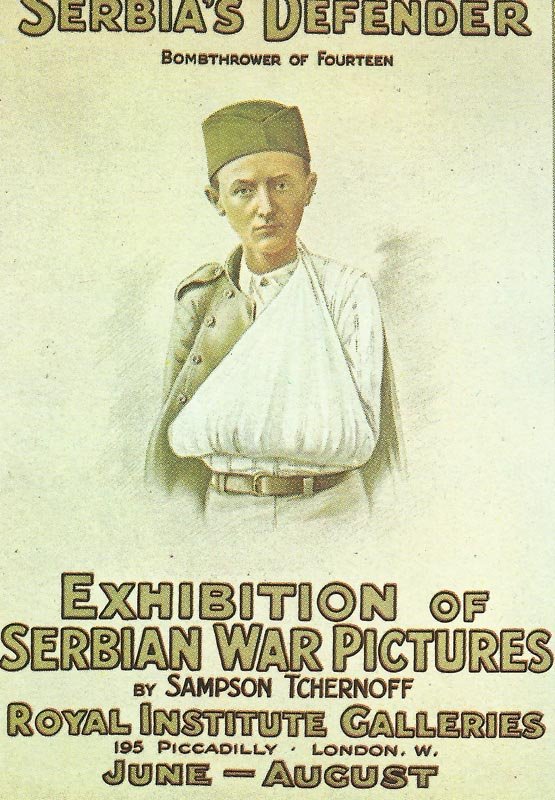
The Central Powers’ attack on Serbia sparked all kinds of reactions from the Allies. Russia, France, and Britain each tried different ways to help Serbia, while Belgium, Japan, and Italy kept their distance.
Diplomatic Efforts by Russia, France, and Britain
Russia took the hardest diplomatic line as Serbia’s traditional backer. The Russian government issued blunt warnings to Austria-Hungary after the July ultimatum in 1914.
Foreign Minister Sergey Sazonov insisted Russia wouldn’t stand by if Serbia was threatened. France backed Russia through the Franco-Russian Alliance and worked closely with Russian diplomats.
The French government promised military support if things escalated. Britain tried to mediate, with Foreign Secretary Sir Edward Grey suggesting a four-power conference to avoid a bigger war.
All three powers condemned Austria-Hungary’s harsh ultimatum to Serbia, calling the demands impossible. When Austria-Hungary declared war on Serbia on July 28, 1914, diplomacy failed.
Support and Obstacles from the Allies
Military help from the Allies moved slowly, mostly because of geography. Russia mobilized but couldn’t easily reach Serbia, and the Ottoman Empire blocked Black Sea routes.
France sent little direct aid since most resources were tied up on the Western Front. Some French officers did serve as advisors to the Serbian army.
Britain had similar problems, with most troops fighting in France and the Dardanelles. The Royal Navy controlled Mediterranean shipping, but supplying Serbia was tough.
The Salonika expedition started late in 1915, with French and British troops landing in Greece to help Serbia. But honestly, this help arrived too late to change Serbia’s fate.
Influence of Belgium, Japan, and Italy
Belgium didn’t play a role in Serbia’s crisis. The country was occupied by Germany and focused on its own survival.
Japan stayed distant. As a British ally, Japan declared war on Germany but focused on the Pacific, not the Balkans.
Italy remained neutral until May 1915, despite pressure. When Italy did join the war, it was too late to help Serbia, and Italy looked to its own goals against Austria-Hungary in the Alps.
Aftermath and Impact on the War
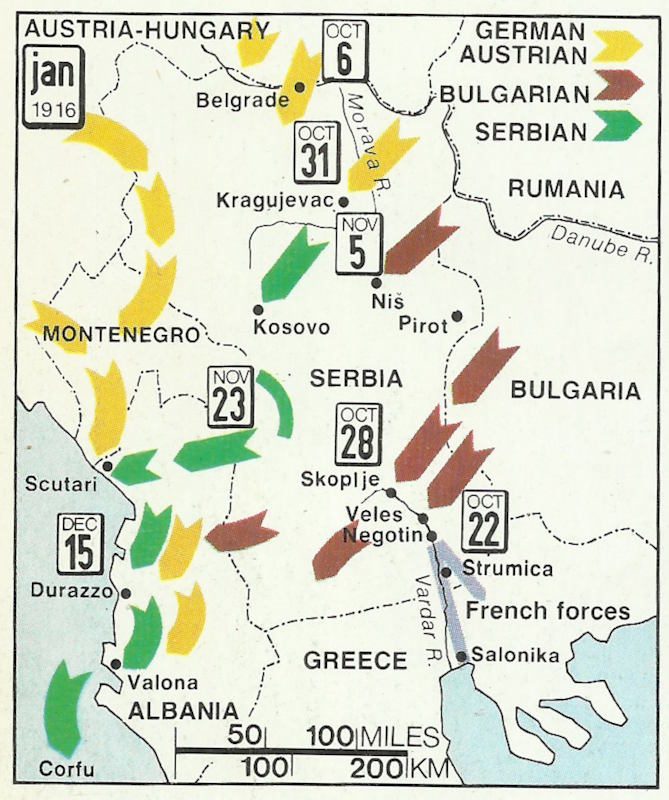
The fall of Serbia brought deep changes to World War I. Serbia lost a quarter of its people, and the Central Powers grabbed key Balkan territory and transport routes.
Consequences for Serbia and Its Government
The Serbian government had to flee its homeland. Officials, military leaders, and thousands of civilians escaped through Albania’s mountains in the harsh winter of 1915-1916.
Many died from cold, hunger, and disease. The journey became infamous as one of the war’s worst evacuations.
Key losses for Serbia:
- 25% of the population killed or displaced
- Lost all territory to occupation
- Government infrastructure destroyed
- Heavy civilian casualties during retreat
The government set up in exile on Corfu. From there, Serbian leaders tried to rebuild with Allied help.
The Serbian army reformed as part of the Allied East Army. They got new equipment and training at the Salonika front in Greece.
Shifts in the Balance of Power
The Central Powers gained huge strategic ground after Serbia fell. Now they controlled a direct land route from Berlin to Constantinople.
Germany could send supplies and troops straight to the Ottoman Empire. The railway link tightened the Central Powers’ alliance.
Austria-Hungary gained temporary control over the Balkans. The empire could shift resources elsewhere, no longer worried about Serbian resistance.
Strategic gains for Central Powers:
- Direct rail access to Ottoman lands
- Control of the Balkans
- Freed up troops for other fronts
- Weakened Russian influence
Bulgaria’s part in the invasion boosted its standing among the Central Powers. The country gained access to Serbian territory and resources.
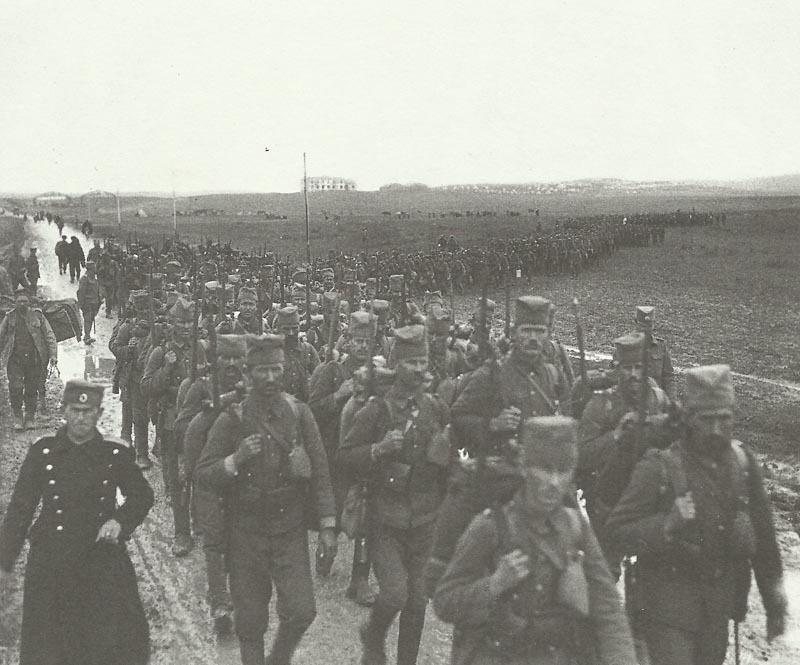
Broader Implications for the Balkans and Europe
The conquest changed the power balance in southeastern Europe. Russia lost its main ally in the Balkans and saw its influence shrink.
Other Balkan countries watched uneasily as the Central Powers crushed smaller states. Montenegro soon faced the same fate.
The victory pushed Germany and Austria-Hungary to try bolder moves elsewhere. They started thinking quick wins were possible against other small Allied nations.
Regional changes:
- Russian influence badly hurt
- Ottoman Empire strengthened
- Allied forces gathered at Salonika
- Balkan neutrality became harder to maintain
The evacuation led to a major refugee crisis, straining Allied resources. Greece, Italy, and others had to help thousands of displaced Serbs.
France and Britain stepped up their commitment at Salonika, realizing they needed to retake the Balkans and restore Serbia someday.
Legacy and Historical Interpretations
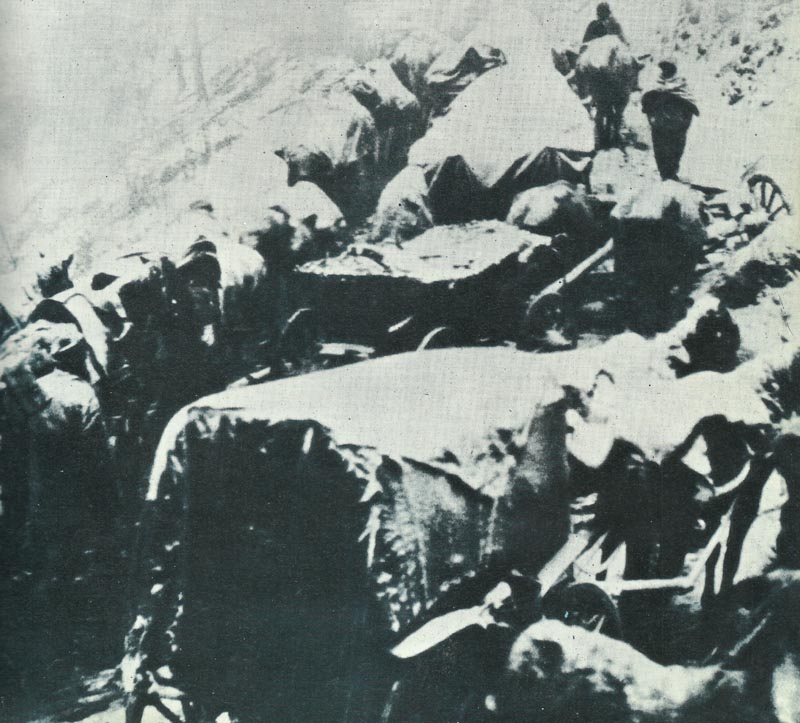
The fall of Serbia and the retreat left deep marks on Balkan politics and military thinking. Historians still debate what it all meant, while people across the region keep the memory alive.
Perspectives from Historical Works and Books
Accounts of Serbia’s conquest go all over the map. Early histories focused on tactics and military blunders. Later writers looked more at the political backdrop.
German historian Richard DiNardo’s analysis highlights the Central Powers’ teamwork. He points out that the conquest opened vital routes to Constantinople and locked in German-Austrian dominance in the Balkans.
Serbian historians often stress the army’s stubborn survival, calling it a kind of victory. They see the retreat as saving Serbia’s ability to fight another day.
Key themes in historical works:
- Military strategy and tactics
- Political consequences for the Balkans
- Bulgarian involvement
- Impact on Allied strategy
Western historians tend to fit the conquest into the bigger World War I story. They look at its effects on Gallipoli and the Dardanelles, and some focus on the humanitarian crisis from all the refugees.
Influence on Future Balkan Politics
The conquest shook up Balkan power dynamics for decades. Serbia’s experience after the war made it wary of Austrian and German influence.
Bulgarian participation left a mark, fueling tensions between Balkan Slavic nations. Serbia never forgot Bulgaria siding with the Central Powers.
The retreat really drove home the need for reliable allies. Serbia leaned hard into its relationships with France and Britain after 1918.
These ties ended up central to Yugoslav foreign policy.
Political consequences included:
- Serbian mistrust of Austria-Hungary
- Damaged Bulgarian-Serbian relations
- Stronger ties to Western Allies
- Greater emphasis on pan-Slavic cooperation
The conquest also changed how Serbia planned its military strategy. They started focusing on mobile defense and strategic withdrawal.
Keeping the army alive became a core principle.
Commemoration and Memory of the Retreat
Serbia sees the retreat as a heroic sacrifice that kept the nation alive. Every year, ceremonies honor the soldiers who died crossing the Albanian mountains.
Schools teach the story as one of national determination. Monuments all over Serbia mark key moments from the campaign.
The retreat route through Albania has turned into a kind of pilgrimage. Veterans’ groups keep up memorials for those who fell.
The retreat lives on in Serbian folklore—songs, stories, all that. These cultural pieces highlight sacrifice and survival.
They paint the retreat as a defining moment in Serbia’s history.
Forms of commemoration:
- Annual memorial services
- School curriculum inclusion
- Military parade participation
- Cultural festivals and exhibitions
Popular memory tends to center on civilian suffering during the occupation. Stories of resistance and survival have become part of the national identity.
The retreat stands as a symbol of Serbian resilience in the face of foreign domination.
Role of Constantinople and the Dardanelles in Regional Dynamics
The Serbian conquest changed Allied access to Constantinople through the Dardanelles. Central Powers locked down their supply lines to the Ottoman Empire.
This link made the eastern front stronger against Russia. The conquest dashed Allied hopes of opening a Balkan front toward Constantinople.
Serbian forces couldn’t threaten Austrian supply routes anymore. The Central Powers took control over southeastern Europe.
After Serbia’s defeat, access to the Dardanelles mattered even more. The Allies ramped up pressure on the Gallipoli campaign.
They needed new ways to help Russia and challenge Ottoman control. Constantinople’s strategic value shaped post-war settlements.
Allied leaders realized just how much Balkan control affected Mediterranean access. This fact influenced treaty talks about Ottoman territories.
Central Powers used their grip on the Balkans to put pressure on Allied shipping. They could threaten routes to the Black Sea and beyond.
The conquest of Serbia turned out to be a key piece of their strategic puzzle.
Frequently Asked Questions
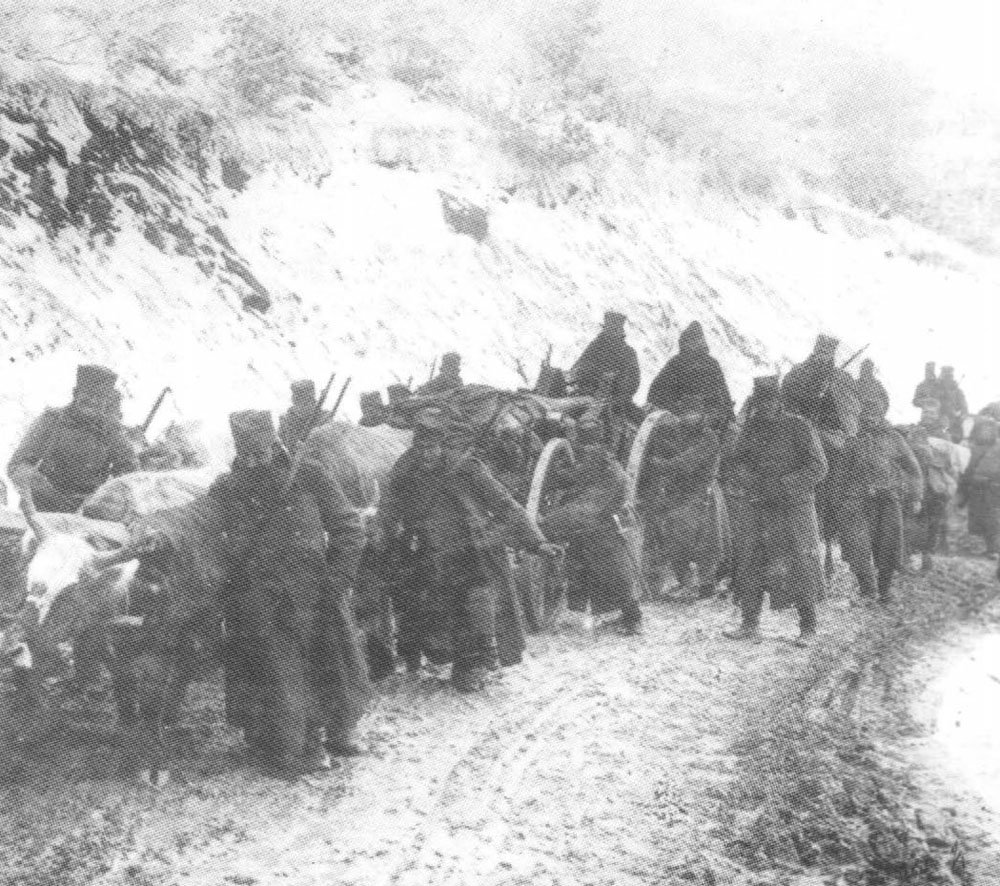
The Serbian campaign was full of political tension, tough military choices, and harsh consequences. Here are some questions about what led to Serbia’s invasion and what happened after the Central Powers took over.
What were the causes of the conflict between Serbia and Austria-Hungary that led to the outbreak of World War I?
The assassination of Archduke Franz Ferdinand on June 28, 1914, set everything off. Gavrilo Princip, a Bosnian Serb student, killed the heir to the Austro-Hungarian throne in Sarajevo.
Austria-Hungary had already stirred things up by annexing Bosnia and Herzegovina in 1908. That move angered Serbia and its ally Russia.
The July Ultimatum slapped Serbia with ten demands that were pretty much impossible. Serbia agreed to eight out of ten.
Austria-Hungary declared war on Serbia on July 28, 1914. That kicked off a chain reaction that dragged the major European powers into war.
What role did Serbia play in the early stages of World War I?
Serbia fought defensively against Austria-Hungary’s attacks in 1914. The Serbian army managed to push back three separate invasions.
The Battle of Cer was the first Allied victory in World War I. That win was a huge surprise at the time.
Serbia’s strategy was basically to hold out and hope Russia and other allies would take the heat off. By July 30, 1914, the Serbian army had mobilized about 450,000 men.
But they didn’t have enough equipment or modern weapons.
How did the intervention of allied forces affect the outcome of the Serbian campaign of 1914?
Allied intervention in 1914 was pretty limited—didn’t really change the Serbian campaign. Serbia mostly fought alone against Austria-Hungary that first year.
Russia helped a bit by threatening Austria-Hungary on the eastern front, which forced Austria-Hungary to move troops away from Serbia. Serbia got some rifles from Russia starting in August 1914.
But those weapons arrived too late for the early battles. Without much outside help, Serbia had to rely on its own strength.
Their early victories were all the more impressive because of that.
What was the strategic significance of Serbia’s geographic position during World War I?
Serbia’s spot blocked the land route from Germany to the Ottoman Empire. That kept the Central Powers from easily supplying their Turkish allies.
If you controlled Serbia, you could connect Berlin to Constantinople by land. That was crucial for Germany to help the Ottoman war effort.
Serbia sat at the gateway to southeastern Europe. Whoever held it could sway the whole region.
When the Central Powers conquered Serbia in 1915, they got temporary control over the Balkans. That let Germany keep the Ottoman Empire supplied for the rest of the war.
What were the consequences of the Austrian-Hungarian declaration of war on Serbia?
The declaration set off a chain reaction that started World War I. Russia mobilized to back Serbia, pulling in Germany, France, and Britain.
Austria-Hungary had to split its forces and fight on multiple fronts. Russian involvement forced them to divide troops between Serbia and the eastern front.
Serbia became a secondary battleground in the wider conflict. The small country faced the full might of the Central Powers.
In the end, the war declaration helped lead to Austria-Hungary’s defeat and breakup. The empire fell apart at the end of World War I in 1918.
How did the Great Retreat impact the Serbian army and its efforts during World War I?
The Great Retreat hit in late 1915 when the Central Powers swept through Serbia. The Serbian army had no choice but to retreat, slogging through Montenegro and Albania just to reach Allied ships.
During this brutal journey, the Serbian army shrank from 420,000 soldiers to maybe 100,000. Most didn’t fall in battle—they lost their lives to disease, exhaustion, and that vicious winter.
Those who survived made it to Greece, where they finally caught a breath and regrouped. They retrained and, somehow, found the strength to keep going.
The battered Serbian forces then joined the Macedonian front. By 1918, they were fighting alongside the Allies in the final offensive.
They helped break through the Macedonian front and, at last, liberated their homeland on November 1, 1918.
References and literature
Illustrierte Geschichte des Ersten Weltkriegs (Christian Zentner)
History of World War I (AJP Taylos, S.L. Mayer)
Der Erste Weltkrieg – Storia illustrata della Prima Guerra Mondiale (Hans Kaiser)
Der I. Weltkrieg – Eine Chronik (Ian Westwell)
Chronicle of the First World War, 2 Bände (Randal Gray)




